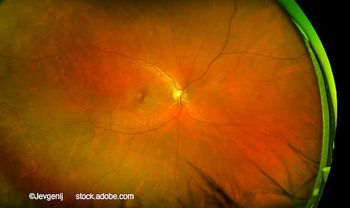
Smoking puts patients at risk for AMD
Cambridge, England?Research published in the January issue of the British Journal of Ophthalmology found not only a strong association between pack years of cigarette smoking and age-related macular degeneration (AMD) but also an increased risk of AMD in nonsmokers exposed to passive smoking.
Cambridge, England-Research published in the January issue of the British Journal of Ophthalmology found not only a strong association between pack years of cigarette smoking and age-related macular degeneration (AMD) but also an increased risk of AMD in nonsmokers exposed to passive smoking.
Individuals who had smoked 40 pack years had an odds ratio for AMD of 2.75 (95% CI 1.22 to 6.20, p = 0.01) compared with nonsmokers; the ratio for CNV was 2.49 (95% CI 1.06 to 5.82, p = 0.04), and for GA it was 3.43 (95% CI 1.28 to 9.20, p = 0.01). Pack years of smoking were calculated by dividing the average number of cigarettes smoked per day by 20 to give packs per day; this figure was multiplied by the number of years of smoking.
Promoting public awareness
By the time AMD is diagnosed, it may be somewhat late to derive any substantial ocular benefit from stopping smoking, but ophthalmologists should help promote the public health message to all patients that smoking is best avoided and could lead to blindness as well as to other diseases, Dr. Yates said. He is Professor of Medical Genetics at the University of Cambridge and Honorary Consultant at Addenbrooke's Hospital, Cambridge, England.
In another important finding from the study, passive smoking exposure, defined as living with a smoker for 5 or more years, increased the risk for AMD among nonsmokers by a ratio of 1.87 (95% CI 1.03 to 3.40, p = 0.04). At least one other study had previously shown a link between passive smoking and AMD, but the risk was not as strong or as well documented as in the recent British Journal of Ophthalmology publication, said Simon P. Kelly, FRCSEd, FRCOphth, FEBO, consultant ophthalmic surgeon, Bolton Hospital, NHS Trust, Bolton, England. Dr. Kelly is the author of several studies on smoking and AMD, including one published last fall in the journal Eye.
"The Cambridge study confirms what we suspected, which is that there's a risk with passive smoking as well," Dr. Kelly said.
Smoking has been found to be a direct risk factor for AMD in a number of studies, but findings have not been consistent, Dr. Yates said. This study was in part an attempt to assess the relationship between various smoking behaviors and AMD. However, the analysis of the smoking habits of the study subjects was also conducted to factor out the influence of smoking within the framework of a broader study of the genetic factors involved in AMD.
Newsletter
Don’t miss out—get Ophthalmology Times updates on the latest clinical advancements and expert interviews, straight to your inbox.



















































.png)


